This has been quite an exciting season regarding our wildlife sightings. The pool area has been a hot spot in particular. Our first sighting involved seeing our first porcupine here on the property. On this particular evening, we were cleaning the pool and we heard something out in the woods. It was way too loud to be deer and was plowing through the tall grass like Godzilla. We saw that whatever it was, it was low to the ground and brownish in color. At this point, it was getting dark and visibility was low and then, this animal began climbing one of the trees. With whatever light that was remaining, we discovered the animal was indeed a porcupine. It was totally oblivious to our being there and was eating away. I watched it for as long as the remaining light would allow. We have yet to see it again and we will just have to savor this one experience.
Our second wildlife sighting was a bit more dramatic than the porcupine. This involved a ruckus coming from the pool area one night. To our horror, we found two skunks frantically trying to get out of the pool. Along with the visual drama of this event, the skunks had sprayed, and what a stench! Before we could come up with a sort of rescue plan, the skunks were able to climb out of the pool on their own. I have watched our many chipmunks chase each other around the pool deck and somehow end up in the pool. I fear this is what happened with the skunks, even though we have had plenty of skunks come through the pool area without any drama. We have since hung a couple of towels on two of the corners, hoping the animals will use this to aid in their climbing out of the pool. Hopefully, the towels are working. I have only found a couple of frogs using the towels and no animals present in the pool.
Our next sighting and the point of this story was of a snowshoe hare. One morning, I was working on the computer, which so happens to face the doors that lead out to the pool and a snowshoe hare was trying to squeeze under the fence to come into the pool area. Did I mention that there is a fence around the pool? Well, this doesn’t mean anything to these animals and they have dug holes underneath the fence to get in or squeeze under the fence door. This is where we keep the garden and bird feeders, so this is where all the good stuff is. The hare was unable to fit under the fence and it simply moved on. The hare has taken up residence pretty close by because I have been seeing it around for weeks now. This is pretty exciting because we haven’t seen any evidence of rabbits or hares recently. We used to see tracks in the snow everywhere on the property and in the last few years, nothing. I hope the hare will stay around the property, as long as it sticks to eating the wild vegetation and not my vegetable and flower gardens!
This will bring me to my next point. Here in Maine, we have two rabbit-like species, the snowshoe hare and the eastern cottontail, a true rabbit. In this post, I will share some information about the snowshoe hare and then discuss a few differences between the snowshoe hare and the eastern cottontail.
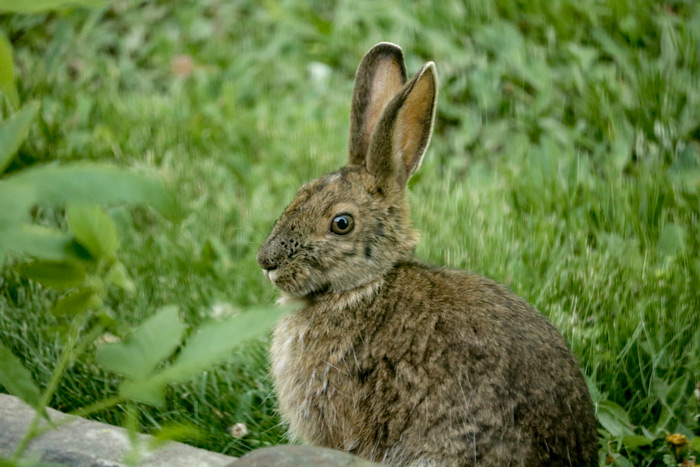
There are eight species of snowshoe hare Lepus americanus in North America, also known as the varying hare or snowshoe rabbit, and are in the family Leporidae, and the order Lagomorphia that includes rabbits, hares, and pikas.
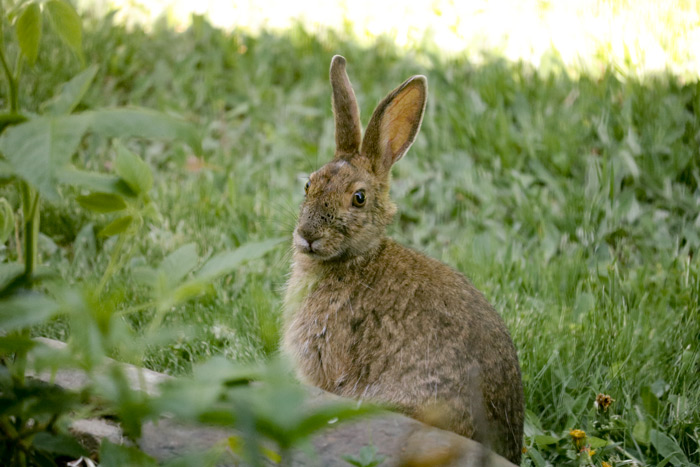
The snowshoe hare is active year-round. They can be found in North America from coast to coast. Hares inhibit areas with heavy snowfall and distribution including Canada, New England the Appalachian Mountains, the Pacific Northwest, Alaska, Minnesota, Michigan, and Montana.
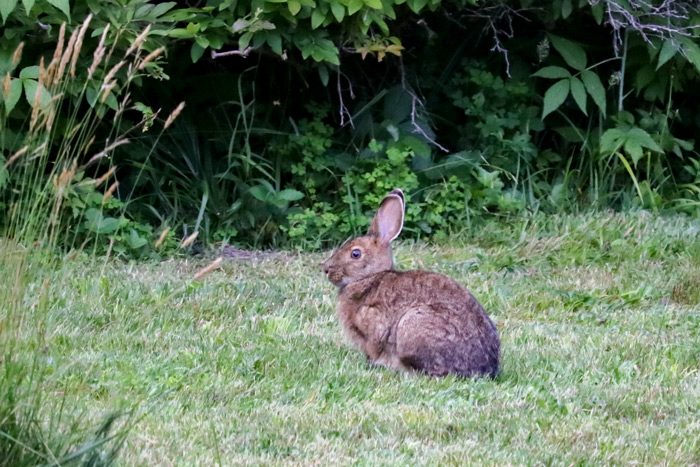
Snowshoe hares can be found in boreal forests and upper forests located in mountains, preferably with a dense shrub layer.
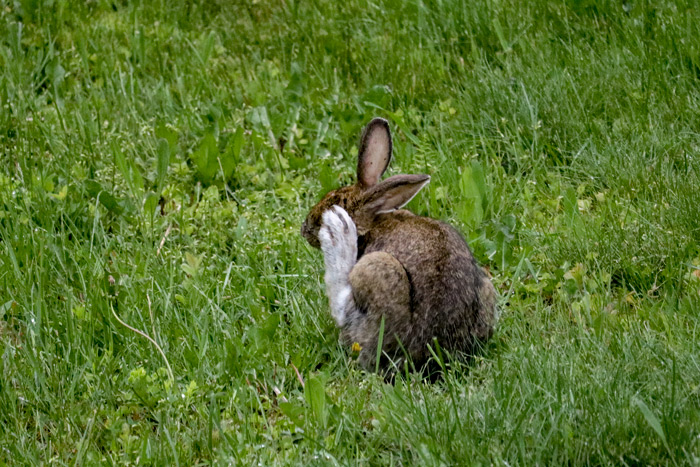
A distinctive feature of the snowshoe hare is its large hind feet. It has the name “snowshoe,” because of the large size of its hind feet. The soles of the feet also have fur for protection against freezing temperatures.
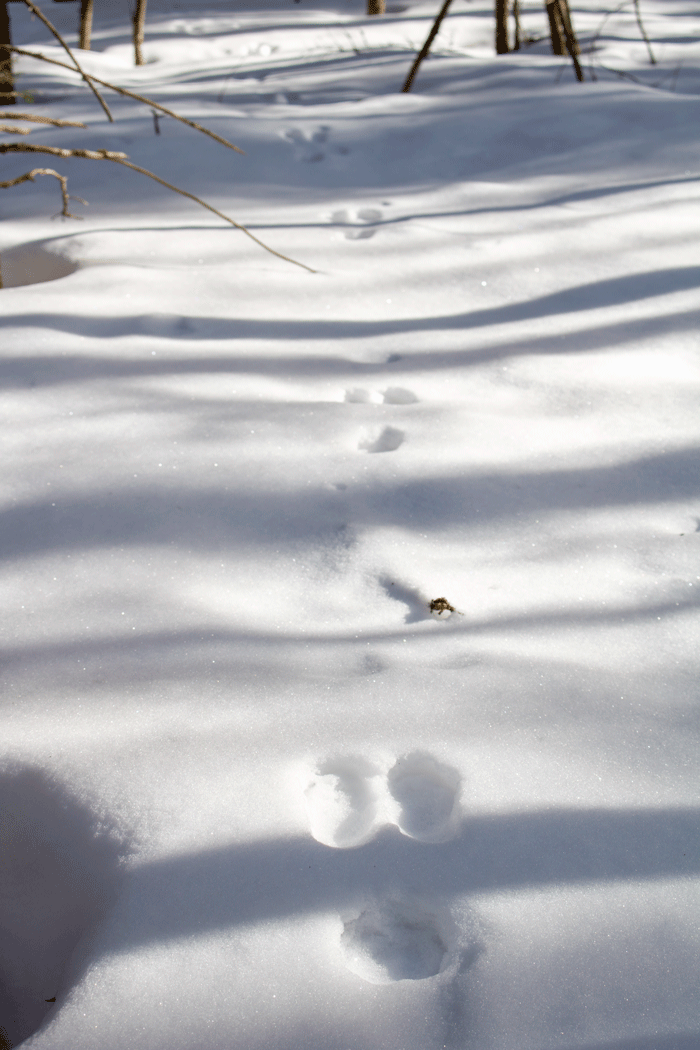
In deep snow, the hare’s feet prevent it from sinking into the snow when it hops and walks. The hare’s feet aid in supporting the hare in two ways. First, the hare is given an edge over larger predators. Second, with each new layer of snowfall, hares are able to reach higher branches for feeding.
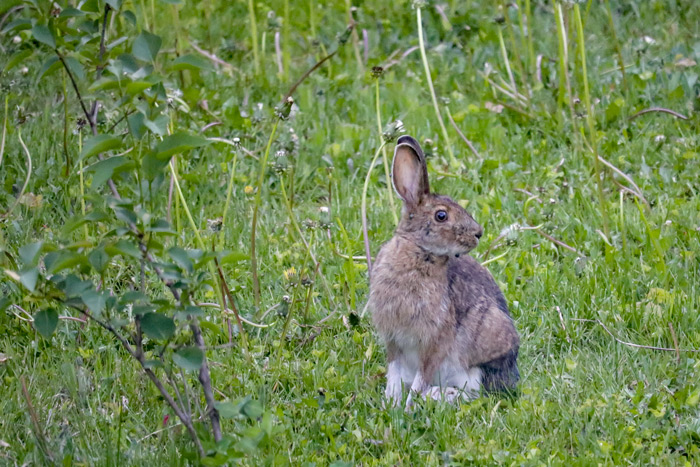
The color of the snowshoe hare’s coat changes, giving it the sometimes name of the varying hare. For camouflage, during the autumn, the coat of the hare will change from a rusty brown into its winter white. Its flanks will remain white year-round. This helps the hare blend in with the dried vegetation peeking out from the shallow snow. As winter progresses, its coat will turn all white except for its nose and ears, which will be tipped in black. Just the tips of the fur will turn white, while underneath will remain gray.
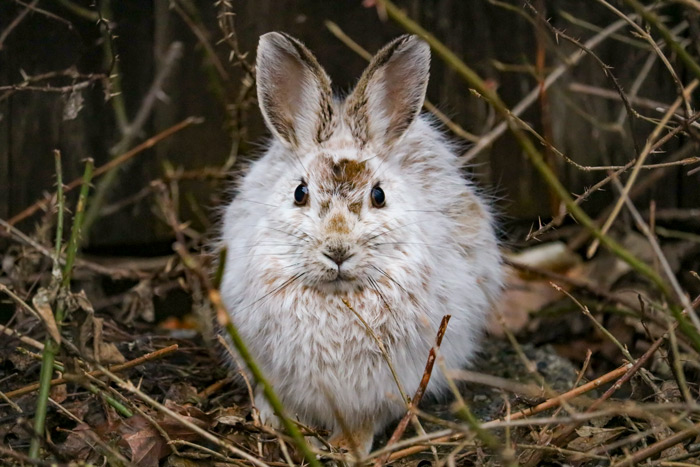
In the spring, the hare’s coat will change back from white to brown. This coat change can take several weeks. This will occur not from the temperature change, but due to changes in the length of the day.
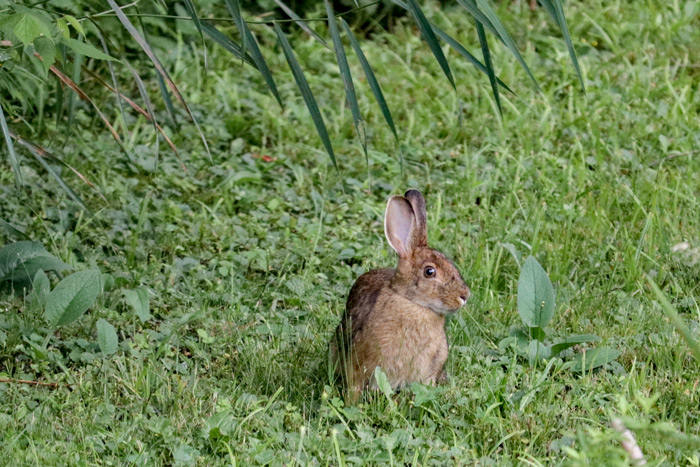
Snowshoe hares are crepuscular to nocturnal, being most active at dusk and before dawn. They can be active during the day on occasion, but they are normally resting at this time.
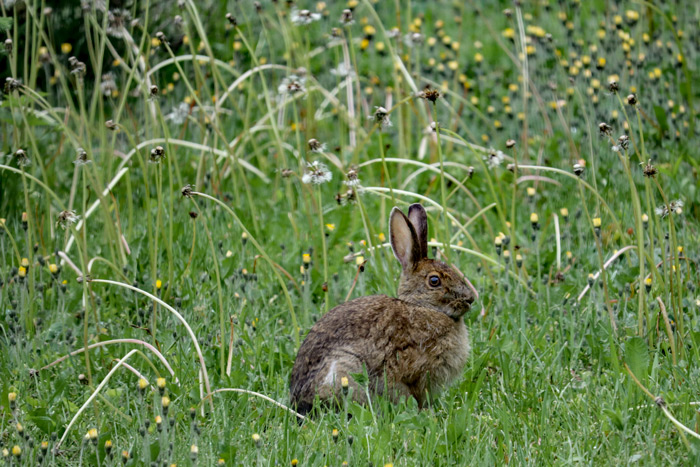
From its home, the range of a snowshoe hare can be from about 15 to 30 acres. Hares will develop a network of well-developed trails through grasses and vegetation. In the early winter, these trails will be covered in light snow providing adequate camouflage. By late winter, hares will not frequent these trails as often and will prefer to remain in the more dense coverage provided by shrubbery or evergreens.
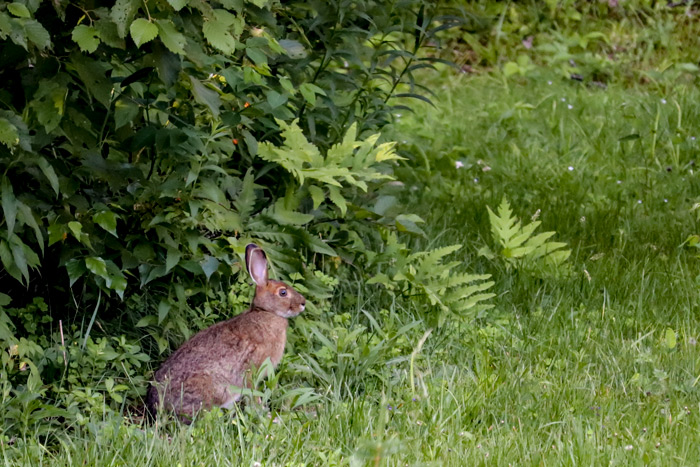
The snowshoe hare’s main defense is to sit still and attempt to remain unnoticed. Once discovered by prey, hares will attempt to find cover in the burrow of another animal, but will usually rely on their speed and leaping abilities.
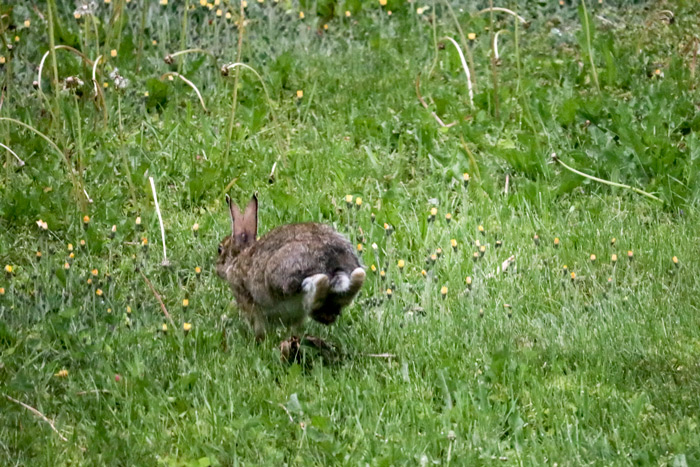
Snowshoe hares can run up to 30 miles per hour and leap twelve feet at a bound. With an extensive knowledge of the trail system around their homes, hares will use this knowledge to their advantage and circle the area when chased. When confronted, hares will thump their hind feet, hiss, or make grunting noises and give a high-pitched scream when caught. Predators of the snowshoe hare include the bobcat L. rufus, Canada lynx Lynx canadensis, mountain lion Felis concolor, American marten M. americana, fox Vulpes and Urocyon spp., coyote Canis latrans, wolves C. lupus, long-tailed weasels Mustela frenataM. vison, fishers Martes pennanti, domestic cats Felis catus, and dogs C. familiaris, black bears Ursus americanus, and some birds of prey.
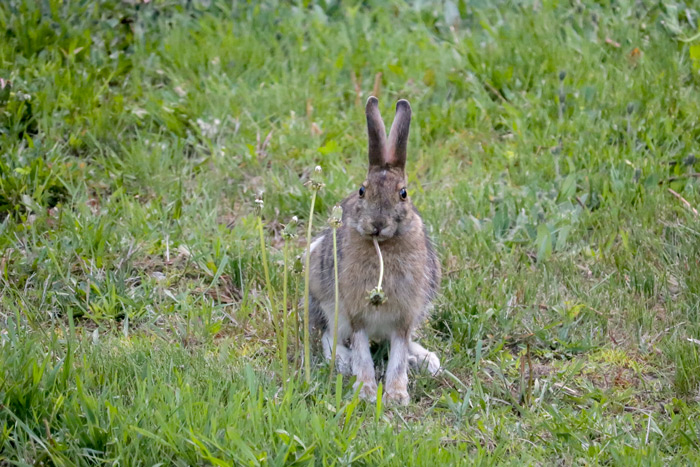
Snowshoe hares are primarily vegetarian, but will occasionally feed on carrion. During the summer, when food is abundant, their diet includes a variety of grasses, flowers, and ferns on occasion. This photograph shows our visiting hare feasting on the dandelions Taraxacum, on the front lawn. It would eat the whole stem and leaves and let the flower head drop and then move on to the next one. During the winter, hares will feed on the twigs of trees and the leaves of evergreens.
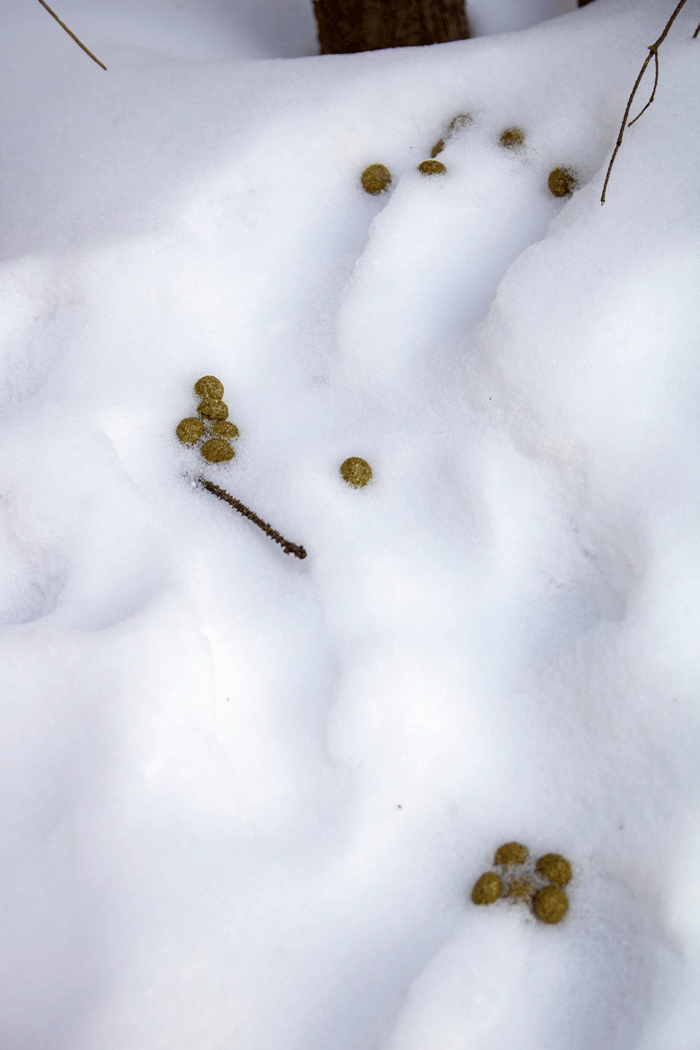
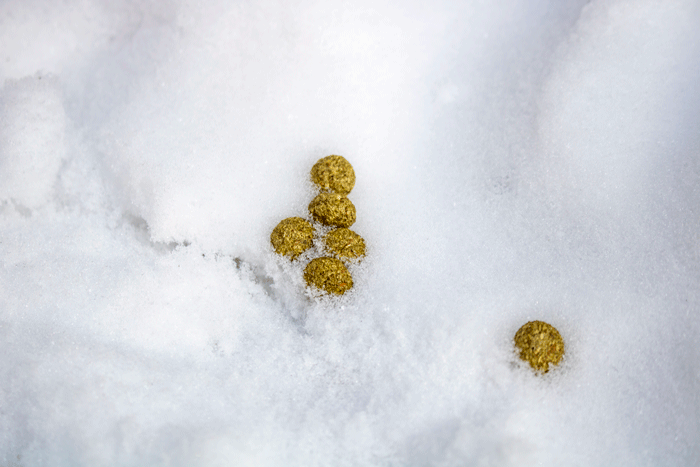
Snowshoe hares also practice cecotrophy. They have two types of droppings, a hard, round pellet, and a soft, mucous-covered pellet. The soft pellets are voided during the day and reingested directly from the anus. This provides supplemental nutritional benefits from its food, being high in protein and B vitamins.
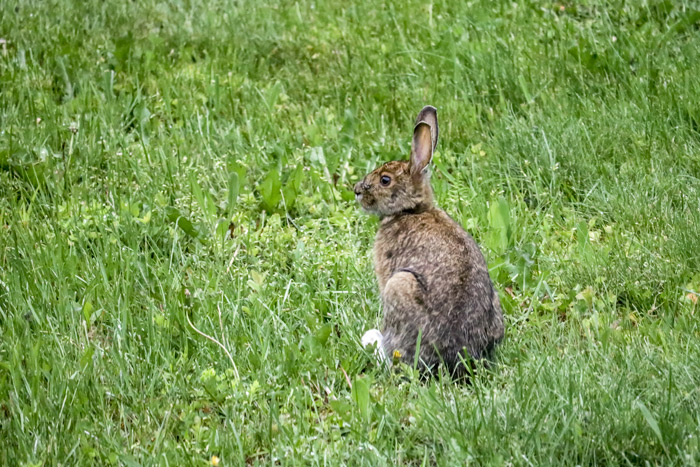
Outside the breeding season, hares will remain solitary or can be seen in groups. The breeding season is stimulated by the new growth of vegetation and will vary with location. Breeding usually begins in late December to January and may last until July or August. During the breeding season, males may fight other males, causing injury to their teeth. Males can also be seen chasing females several weeks before mating.
What are the differences between the snowshoe hare and the Eastern cottontail?
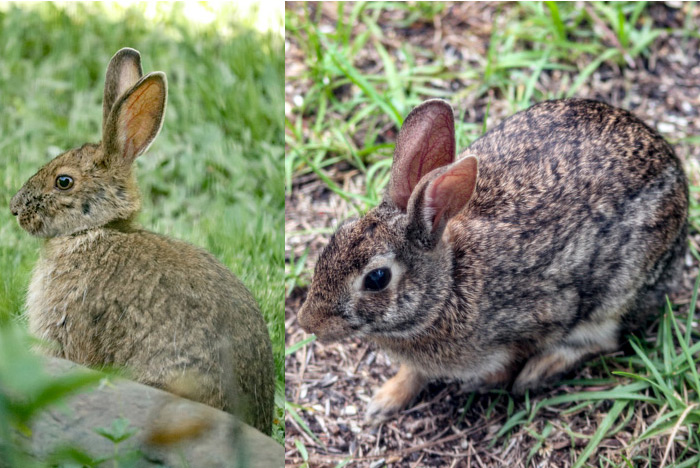
Although snowshoe hares Lepus americanus, and eastern cottontails Sylvilagus floridanus can look the same, they are totally different species. Here are a few differences. The eastern cottontail is a true rabbit. Snowshoe hares are larger than eastern cottontails. Hares have larger bodies, longer ears, and much longer feet. The eastern cottontail is named for its short, white cotton-like tail. They shed twice a year. Their summer coat is short and brown and their winter coat is longer and grayer. They don’t share the same seasonal color change as the hare.
The hare is mostly solitary and the cottontail can be found in groups. Hares can be found in open areas and prairies. Hares spend most of the day resting in shallow depressions called forms. Forms are chosen randomly and typically located in dense cover. Cottontails prefer to be around trees and shrubs and will use forms and burrows made by other animals because they do not make their own. Hares will try to outrun predators, while cottontails prefer to hide.
Hares are a precocial species, born fully furred and with their eyes open. They are also ready to get up and move around within hours of their birth. Rabbits, on the other hand, are an altricial species, blind, hairless, and cannot regulate their own body temperature. They will need the attention of their mother for the first two weeks of their life. The gestation period of the hare is thirty-five to forty days and litters average around three to five young called leverets. They can have up to four litters a year. The gestation period for the eastern cottontail is twenty-eight days, ranging from twenty-five to thirty-five days. They will have three to four litters each year. Litter size can be one to twelve and average around five young, called kits.
Here is a short video of our snowshoe hare in one of its spots in the backyard:
Another short video of the snowshoe hares back in the woods during the winter:
Resources used for this post:
Guide to Animal Tracking and Behavior and maine.gov
Leave a Reply